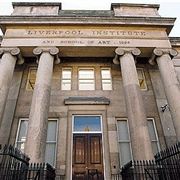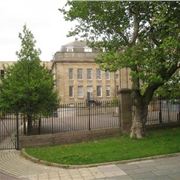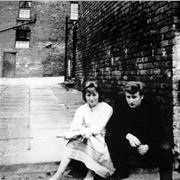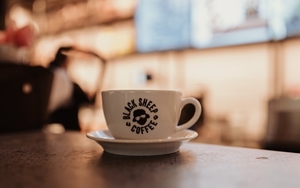AS the headline writers might say: it’s been a long and winding road. Or something like that.
LIPA, the Liverpool Institute for Performing Arts, has finally got its hands on the historic building where Beatles John Lennon and Stuart Sutcliffe studied art.
A £3.7m deal, between LIPA and property developer Maghull, is a major triumph for the institute and its founder and CEO, Mark Featherstone-Witty.
 LIPA started life in the former Liverpool Institute for Boys, the grammar school attended by Paul McCartney and George Harrison and closed as a result of a cull of posh schools when Labour-run Liverpool went comprehensive.
LIPA started life in the former Liverpool Institute for Boys, the grammar school attended by Paul McCartney and George Harrison and closed as a result of a cull of posh schools when Labour-run Liverpool went comprehensive.
LIPA expanded into Number 70, the renowned 1970s blot on the landscape of Hope Street, and one time Printing and Design Department of Liverpool Community College.
When the real biggie, Number 68 (the art college) first became available a few years ago, LIPA couldn't afford the then asking price of around £4m.
Maghull bought it along with three others, including Hahnemann House (built as a homeopathic hospital) and Josephine Butler House in Myrtle Street, which it controversially demolished and is now a car park.
In an interview with Liverpool Confidential, Mark Featherstone-Witty described the latest move as “brilliant news for LIPA” and outlined the future plans for the performing arts college.
LC: Have you bought Number 68 because of its links to the Beatles?
MFW: While there is the romance of its links to the Beatles, we are simply desperate for more space. For every place available at LIPA there are 28 applicants. This new building will give us the capacity to expand and attract more students.
LC: In an age of student tuition fees and less government cash, will there be more demand?
MFW: We believe so, We will also be able to attract more international students who want to come here, bringing with them most welcome income.
 Paul McCartney And Mark
Paul McCartney And Mark
Featherstone WittyLC: But wasn't the original reason for LIPA to create a place for local people to get into performing arts?
MFW: We have an open policy and I am delighted to welcome local students. We have a competitive policy and applications can be made by local people.
The biggest grouping of our students comes from the North West and of those the biggest number are local students. The expansion into Number 68 will enable us to introduce new courses.
LC: So who is footing the bill for this purchase? Surely not the remaining... well you know...?
MFW: We are paying for this from our own resources. LIPA is fortunate enough to be in the top quarter of higher academic institutions making a surplus. For us, that surplus is around £600,000 to £800,000 a year.
LC: Isn't there a tenant using it at the moment – Liverpool JMU?
MFW: Yes JMU use part of the old School of Art building and that arrangement continues until 2013, which, for us, is perfect timing.
LC: Talking of JMU, doesn't it validate LIPA's degree courses and in any case aren't you trying to validate your own degrees as LIPA?
MFW: The validation agreement with JMU is coming to an end. Currently we are in negotiations with other validation authorities. I can tell Liverpool Confidential the current front-runner is the OU (Open University). This will take us much further along the road to self-validation.
LC: What will happen to Number 70, that modern block on the corner of Hope Street and Upper Duke Street?
 Round the backMFW: Number 70 would never get building permission today in this area. However inside it is rock solid. We have created large dance areas in there. We have yet to decide what will happen to No 70 when we move into No 68. We may keep it, or rent it out.
Round the backMFW: Number 70 would never get building permission today in this area. However inside it is rock solid. We have created large dance areas in there. We have yet to decide what will happen to No 70 when we move into No 68. We may keep it, or rent it out.
LC: Tell us something about No 68.
MFW: It opened in 1883 and was built on the site of two large houses. They were purchased along with their large gardens to make way for what was a big extension next door to the Institute. The purchase and fitting out of No 68 at the time cost about £12,000. A competition took place for a design with a prize of 100 guineas and it was won by a local architect named Thomas Cook - no relation to the traveller.
LC: What happens now?
MFW: Once we have occupation of No 68 we will decide what to do. Some extra walls have been added over the years. The important thing is it will be used for the purpose for which it was built – for learning.
Art and facts
LIPA's acquisition brings together the place where three of the Beatles were taught, John Lennon, Paul McCartney and George Harrison. Former bass guitarist Stuart Sutcliffe was also at the School of Art.
John Lennon met his first wife Cynthia Lennon while they were at the School of Art.
 John Lennon outside Ye CrackeLennon's after-studies watering hole was Ye Cracke public house just around the corner.
John Lennon outside Ye CrackeLennon's after-studies watering hole was Ye Cracke public house just around the corner.
McCartney, who helped found LIPA and is its lead patron, has been briefed about the purchase and is said to be supportive.
The Liverpool Institute (and nearby Blackburne House Institute for Girls) finally closed in 1985 when the council introduced comprehensive education. The deputy leader of the council at the time was a Liverpool Institute old boy, Derek Hatton.
Other famous musical alumni from the School of Art include most of the band Deaf School, Bill Drummond and Henry Priestman.
Other famous alumni from LIPA include Sandi Thom and The Wombats.
The Liverpool School of Art and Design is now located at Duckinfield Street in LJMU's Mount Pleasant Campus, next door to to the Liverpool Metropolitan Cathedral. The six storey building was constructed between 2005 and 2008 at a cost of £27 million.
Maghull Developments had received planning permission to convert the Grade II listed School of Art building into "luxury apartments".















